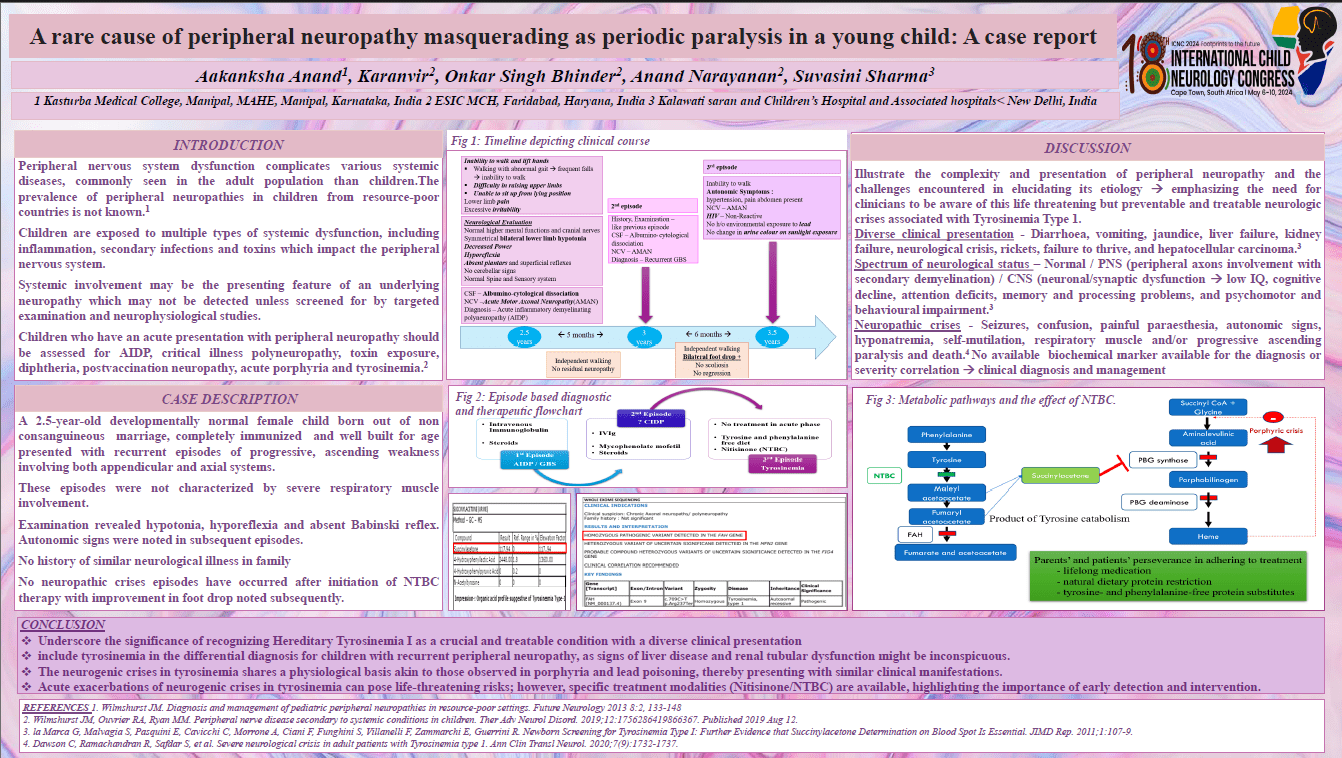A Rare Disease Masquerading As Periodic Paralysis In A Young Child: A Case Report
Introduction: Peripheral nervous system (PNS) dysfunction can complicate various systemic diseases. Whilst this is more common in the adult age group, children are also at risk. Children are exposed to multiple types of systemic dysfunction, especially from inflammation, secondary infections, toxins, and so on, which potentially lead to primary and secondary impact on the PNS. Systemic involvement may be the presenting feature and an underlying neuropathy may not be detected unless screened for by targeted examination and neurophysiological studies. Children who have an acute presentation with peripheral neuropathy should be assessed for AIDP, critical illness polyneuropathy, toxin exposure, diphtheria, postvaccination neuropathy, acute porphyria and tyrosinemia type 1. Case Description: A well built 2 years 6-month-old developmentally normal girl presented with a history of recurrent episodes (30, 36, 42 months of age) of distal weakness in her arms and legs with hyporeflexia. These episodes were not characterized by severe respiratory muscle involvement. Electrophysiological studies were consistent with inflammatory demyelinating polyradiculoneuropathy (IDP) and treatment with immunosuppressive agents appeared to lead to an improvement in the initial episodes. However, the development of hypertension and the recurrent episodic nature with sequalae lead to workup for other causes. A diagnosis of type I Tyrosinemia was made based on increased urinary excretion of succinyl ac
Aakanksha Anand
KMC Manipal
India
Karan Vir
ESIC MCH Faridabad
India
Onkar Singh Bhinder
ESIC MCH Faridabad
India
suvasini sharma
Lady Hardinge Medical College
India
